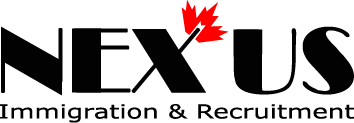
Survival Tips for International Students: Avoiding First-Year Academic Pitfalls
Today, we have some survival tips for international students to avoid first-year academic pitfalls.
For many international students, coming to Canada to study at university is both an exciting and highly anticipated experience. It offers the opportunity to explore a different educational environment and immerse oneself in a multicultural setting. However, Canada’s education system and academic culture can differ greatly from those in other countries. Differences in cultural background, academic traditions, teaching methods, and university regulations may amplify certain issues that seemed insignificant back home, potentially leading to misunderstandings or even impacting academic progress.
This is especially true for students who arrived in Canada only in grade 11 or later and are now starting their first year at university. They may encounter unique challenges as they navigate this new academic environment. This guide aims to highlight three common academic pitfalls that first-year international students should avoid:
- Avoiding Accusations of Plagiarism: Canada’s academic system strictly regulates plagiarism, and even unintentional plagiarism can have serious consequences.
- Preparing for Labs and Exams: Lab courses are central to many programs in Canadian universities, and thorough preparation for labs, as well as midterm and final exams, is crucial for strong academic performance.
- Adjusting Study Attitudes: Succeeding in Canadian classrooms requires both knowledge-building and a strong sense of academic freedom and self-management.
The following advice is intended to help international students integrate more smoothly into Canadian campus life and start building a successful academic career.
Avoiding Accusations of Plagiarism: Citation and Writing Preparation
In Canadian academic environments, academic integrity is an essential concept. Any idea, data, or argument borrowed from another person must be appropriately cited to acknowledge the original source. Failure to do so is considered academic misconduct, a serious violation that can negatively impact a student’s grades or even their degree. Many international students are unfamiliar with these standards when they first arrive in Canada and can unknowingly violate school policies. Therefore, learning to cite sources correctly and following academic guidelines is a fundamental skill that every international student must acquire.
Different fields require different citation styles. Here are five commonly used formats:
- APA: Widely used in psychology, education, and social sciences, suitable for referencing journal articles, research reports, and academic literature.
- MLA: Common in the humanities, especially literature, linguistics, and cultural studies.
- Chicago/Turabian: Applied frequently in history and the arts, where detailed notes aid readers’ understanding.
- Harvard: A flexible style commonly used in business and social sciences, emphasizing author-date notation.
- IEEE: Designed specifically for engineering and computer science, this numbered citation style helps readers quickly locate references.
Familiarizing oneself with tools like Microsoft Word and Google Docs, which offer built-in bibliography and footnote generators, can greatly streamline the formatting process. These tools save time and help ensure that citations meet formatting requirements.
Another crucial step is clarifying citation guidelines with your instructors before starting an assignment. Different instructors and courses may have varying expectations for citation length, format, or the use of editing tools. For example, some courses may limit the amount of quoted material to only 10% of the overall paper to ensure that students’ own perspectives are dominant. In addition, instructors may impose restrictions on tools for grammar, spelling, and style checks or even on content generators (like ChatGPT, CoPilot, or Grammarly). Addressing these specifics with your instructor beforehand can prevent unnecessary misunderstandings during the writing process.
Preparing for Labs and Exams
Lab preparation is vital, especially for students in science-based programs. In Canada, lab courses require significant pre-lab preparation and adherence to strict safety standards. Students who do not complete the required pre-lab work may be denied entry to the lab, resulting in a zero for that session, which could impact their final grade or course credits. Therefore, it is essential not to overlook lab preparation.
Pre-lab preparation often includes completing designated exercises on course websites like BlackBoard or Moodle, writing pre-lab notes, and preparing details on the experiment’s objectives, steps, data tables, and calculation formulas in a lab notebook. This preparation not only boosts lab efficiency but also deepens the student’s understanding of the experiment’s content.
Midterm exams are sometimes conducted during lab sessions, especially when the experiment is particularly challenging. These exams require students to complete and submit lab reports on the spot and often involve measuring unknown concentrations or approximating known constants. Completing these exams successfully can directly affect a student’s midterm grade.
Final exams may cover all lab content from the semester. A strong preparation strategy includes systematically reviewing pre-lab calculations, observation records, and discussions for each lab session. Knowing the key steps and observational outcomes for each experiment is essential for success on the final exam.
Adjusting Study Attitudes and Class Engagement
While Canadian universities widely promote academic freedom, international students may encounter diverse attendance policies. Some schools do not factor attendance into grades directly, yet instructors often use methods like in-class quizzes and learning logs to encourage students to attend. While schools may not formally require attendance, active participation in class is still key to academic success.
In many cases, instructors will design quizzes and journals as part of the class experience, which not only encourages participation but also allows students to deepen their understanding of the course material. Many students find that instructors who incorporate such activities tend to grade leniently and are open to helping students address academic challenges. Therefore, engaging in these class activities can be a pathway to academic improvement.
Furthermore, it is essential to pay close attention to assignment submission policies. Different courses may have different submission methods, deadlines, and locations. For online submissions, ensure that the file uploads correctly. If any issues arise, such as a failed upload, it is best to immediately take a screenshot of the error and email both the screenshot and the assignment file to the instructor to avoid grade penalties. When submitting a physical copy, if it cannot be given directly to the instructor, confirm that the department office’s receptionist stamps the submission, ensuring that the assignment is marked as received.
Conclusion
Life at a Canadian university can be challenging for international students, yet it also offers numerous learning opportunities. By following the guidelines presented in this article, students can build a solid foundation in academic integrity, lab preparation, and class engagement. Learning how to properly cite sources, being well-prepared for lab work, and actively participating in class are essential skills for adapting to Canadian campus life.
Over time, these academic standards and requirements will become second nature, helping international students smoothly integrate and succeed in Canada’s academic culture. Hopefully, this advice will help students take their first confident steps in their academic journey, establishing a strong foundation for future academic achievements. With these skills and the right mindset, students will be well-equipped to navigate the challenges of academic and campus life.







